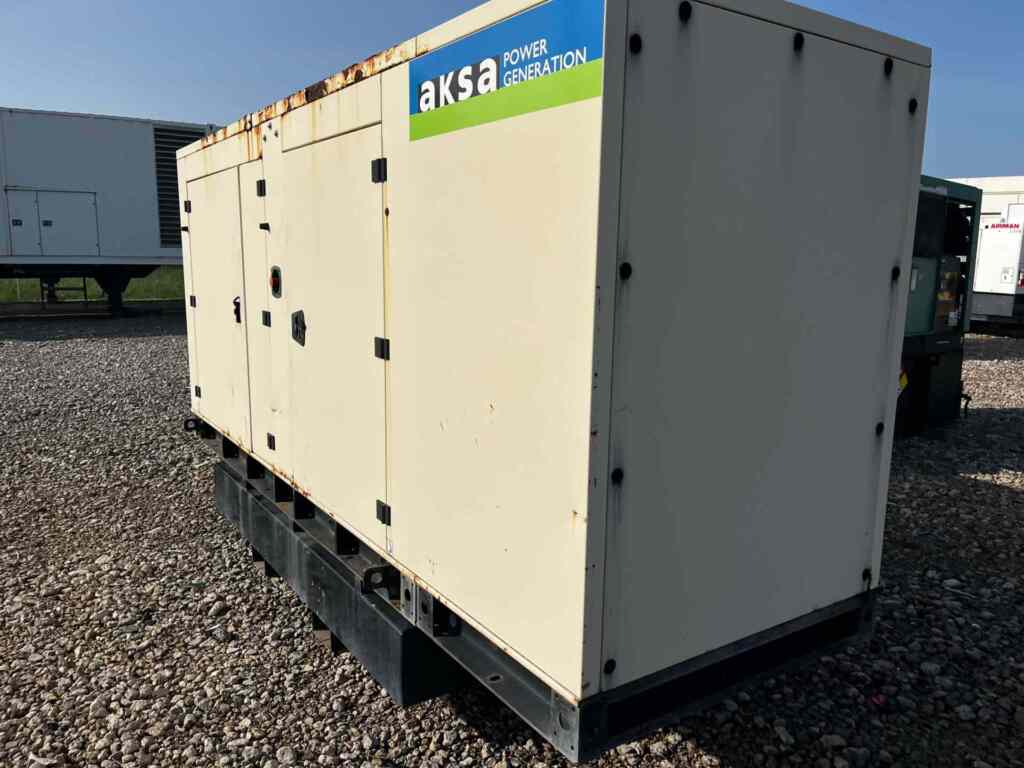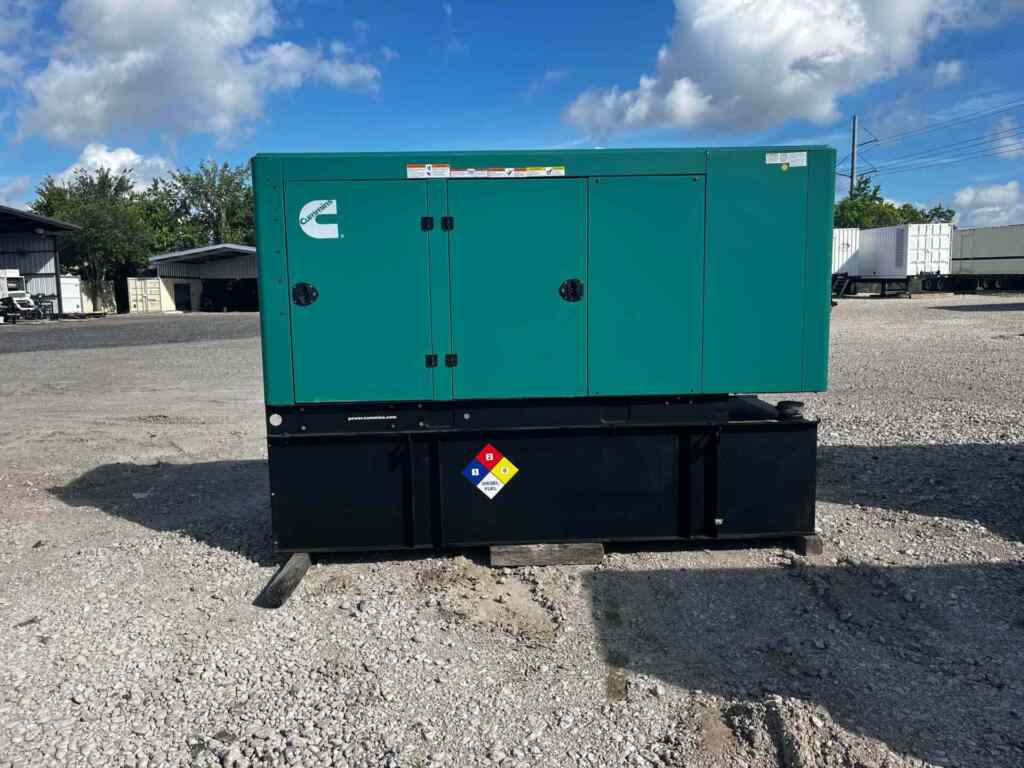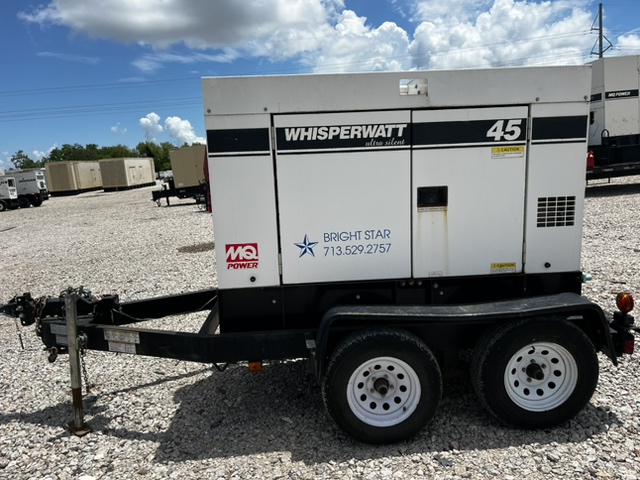Industrial standby generators are vital to maintain financial continuity in today’s fast-paced economy. For banks and financial institutions, even brief power outages can cause significant losses and disruptions. Backup generators have become indispensable in this sector, safeguarding against power failures and protecting digital transactions, data integrity, and customer trust. These robust power solutions ensure regulatory compliance and maintain competitive advantage in an industry where downtime is not an option.
The Financial Impact of Power Outages
To understand why backup power is so important, we need to look at how much power outages can cost a financial institution. Recent studies show that power failures can lead to huge losses, especially for companies within the financial sector.
| Source | Impact |
| Ponemon Institute (2016) | Average cost of a data center outage: $740,357 |
| U.S. Department of Energy | Annual U.S. economic loss due to power outages: $150 billion |
| Statista | Potential loss for financial services companies: Up to $6.48 million per hour of downtime |
These figures paint a stark picture of the financial risks associated with power failures. To put this into perspective:
- The cost of a single data center outage ($740,357) is equivalent to the annual revenue of some small to medium-sized businesses.
- The annual U.S. economic loss ($150 billion) exceeds the GDP of many countries.
- For a large financial institution, just one hour of downtime could potentially wipe out the profits from millions of transactions.
Moreover, a 2018 study by Eaton found that 25% of all data center outages result in losses exceeding $1 million. This doesn’t account for less tangible costs such as damage to reputation, loss of customer trust, and potential regulatory penalties.
This upward trend in outage costs, coupled with the increasing frequency of extreme weather events and an aging power infrastructure, underscores the critical need for reliable backup power in the financial sector. Industrial standby generators have become not just a contingency measure, but a fundamental component of risk management and business continuity planning for financial institutions.
The Important Role of Bank Generators
Banks are the backbone of our economy, handling millions of transactions daily. A power failure can halt these operations, potentially costing millions in lost business and damaged reputation. Bank generators serve as a reliable safeguard against such scenarios.
Key Functions Protected by Bank Generators:
- ATM operations
- Online banking systems
- Security systems and cameras
- Trading platforms
- Customer service centers
- Data centers and servers
By maintaining these critical operations, bank generators help prevent significant financial losses, protect sensitive data, and preserve customer trust. According to the Federal Financial Institutions Examination Council (FFIEC), solid backup power systems are a key component of operational risk management for banks.
The importance of these systems is reflected in industry adoption rates. A 2022 S&P Global Market Intelligence report found that 92% of U.S. banks and credit unions have invested in backup power systems, underscoring their critical role in ensuring financial continuity.
Industrial Gas Generators in the Financial Sector
While diesel generators have been the traditional choice, industrial gas generators are gaining traction in the financial sector due to several key advantages:
- Cleaner Emissions: Natural gas generators produce fewer greenhouse gas emissions compared to diesel. According to the U.S. Environmental Protection Agency, natural gas emits about 50-60% less CO2 than coal when combusted in a new, efficient natural gas power plant.
- Lower Fuel Costs: The U.S. Energy Information Administration reports that natural gas prices have generally been lower and more stable than diesel prices over the past decade, offering potential cost savings for long-term operations.
- Extended Run Times: Connected to municipal gas lines, these generators can operate continuously without refueling, a critical advantage during prolonged outages.
- Quieter Operation: Gas generators typically operate at 10-15 decibels lower than comparable diesel units, making them more suitable for urban environments where noise regulations may be strict.
- Reduced On-Site Fuel Storage: This minimizes potential hazards and maintenance requirements associated with large fuel tanks.
For large financial campuses or data centers, industrial gas generators provide a cost-effective and environmentally friendly solution for long-term power needs. It’s worth noting that some financial institutions are exploring hybrid systems that combine both gas and diesel generators to maximize flexibility and resilience.
Comparison: Diesel vs. Natural Gas Generators
To help financial institutions make informed decisions about their backup power systems, here’s a refined comparison of diesel and natural gas generators:
| Factor | Diesel Generators | Natural Gas Generators |
| Initial Cost | Lower upfront investment | Higher initial cost due to more complex systems |
| Fuel Cost | Generally higher and more volatile | Typically lower and more stable over time |
| Fuel Storage | On-site storage tanks required | No on-site storage; connected to gas lines |
| Emissions | Higher CO2 and particulate emissions | Lower emissions; cleaner burning fuel |
| Power Density | Higher power output per unit size | Lower power output per unit size |
| Cold Weather Performance | Excellent cold start capability | Good, but may require additional heating systems |
| Maintenance | More frequent; oil changes, fuel filtering | Less frequent; fewer moving parts |
| Fuel Availability | Widely available, can be transported | Depends on existing natural gas infrastructure |
| Noise Levels | Generally louder | Typically quieter operation |
| Load Response | Faster response to sudden load changes | Slightly slower load response |
This comparison highlights that the choice between diesel and natural gas generators depends on various factors including location, budget, environmental concerns, and specific operational requirements. Financial institutions should carefully evaluate these aspects in the context of their unique needs and local conditions when selecting a backup power solution.
The Multifaceted Role of Backup Generators
Industrial standby generators in financial institutions safeguard a range of critical assets and functions beyond mere monetary value:
Customer Trust
- Ensures continuous access to accounts and services.
- Maintains ATM functionality during power outages.
- Enables uninterrupted customer support.
Regulatory Compliance
- Meets requirements set by bodies like the Federal Financial Institutions Examination Council (FFIEC).
- Helps satisfy business continuity regulations.
- Supports data protection laws by keeping security systems operational.
Employee Productivity
- Keeps workstations, servers, and communication systems running.
- Allows staff to continue serving customers and processing transactions.
- Maintains climate control in office environments.
Data Integrity
- Prevents data loss during unexpected shutdowns.
- Keeps security systems active to protect against physical and cyber threats.
- Ensures continuous operation of data backup and recovery systems.
Competitive Advantage
- Allows institutions to continue operations when others may be forced to close.
- Enhances reputation for reliability and preparedness.
- Potentially attracts customers from less prepared competitors during crises.
By protecting these diverse aspects, backup generators play an important role in maintaining the overall stability, reliability, and competitiveness of financial institutions in an increasingly digital and interconnected world.
Real-World Applications of Industrial Standby Generators in Finance
Industrial standby generators ensure financial continuity across various sectors. This table showcases how different financial institutions use backup power to protect critical operations and maintain resilience during outages.
| Financial Institution Type | Backup Power Information | Importance |
| Stock Exchanges (NYSE) | Robust backup power system; exact capacity undisclosed for security reasons | Critical for maintaining global trading operations |
| Central Banks (Federal Reserve) | Multiple layers of backup power; Federal Reserve Bank of New York has a 10.9-megawatt cogeneration plant | Essential for managing national monetary policy and overseeing the banking system |
| Credit Card Processing Centers (Visa) | N+1 redundancy in power systems; can process over 65,000 transaction messages per second | Ensures millions of transactions can be processed without interruption |
| Investment Banks (Goldman Sachs) | Significant backup power capacity at data centers; exact figures undisclosed | Supports high-frequency trading and complex financial modeling |
| Retail Banks (Bank of America) | Backup generators in critical branches nationwide; over 4,300 branches as of 2021 | Allows for continued customer service during regional power outages |
| Insurance Companies (State Farm) | Multiple high-capacity generators backing data centers; specific capacities undisclosed | Protects policyholder data and ensures claims can be processed 24/7 |
These examples demonstrate the critical role of industrial standby generators in financial risk management. As digital dependence grows, these systems are becoming increasingly vital in maintaining global financial stability during power disruptions.
Choosing the Right Power Solution
When selecting a standby generator for a financial institution, consider factors like:
- Power requirements: Ensure the generator can handle peak loads.
- Fuel type: Is diesel, natural gas, or bi-fuel the best option for your operation?
- Noise levels: Consider your location – urban settings may have regulations regarding noise output.
- Maintenance needs: Regular testing and servicing are critical, so plan for this accordingly.
- Scalability: Can the system grow with your business?
- Environmental regulations: Ensure compliance with local emission standards.
- Integration with existing systems: Make sure current systems are compatible with newly installed transfer switches and monitoring systems.
- Redundancy: N+1 or even N+2 configurations for critical applications.
Maintenance and Testing: Ensuring Reliability
Having a backup generator is only the first step in securing a steady supply of power for your institution. Regular maintenance and testing are critical to ensure the system will perform when needed. Here is a brief break-down of suggested maintenance for your generator:
- Weekly: No-load tests to ensure the generator starts and runs properly.
- Monthly: Load bank tests to simulate actual power demand.
- Annually: Full preventive maintenance check, including fluid changes and component inspections, by a professional.
According to the Uptime Institute, human error accounts for 70% of data center outages. Regular training and drills for generator operation can significantly reduce this risk, as can routine, preventive maintenance.
Emerging Trends and Regulatory Landscape in Backup Power for Finance
Financial institutions are adopting innovative backup power solutions while navigating complex regulations. New technologies and compliance requirements are reshaping how the industry ensures power resilience.
Technological Advancements
| Technology | Description | Example |
| Microgrids | Integrate generators with renewable sources like solar for enhanced resilience. | Goldman Sachs is exploring microgrid technology in New Jersey. |
| Fuel Cells | Offer clean, quiet backup power for extended periods. | Bloom Energy’s installation at Morgan Stanley, New York includes fuel cells. |
| Battery Storage Systems | Provide instantaneous power and load smoothing, complementing traditional generators. | JPMorgan Chase is piloting large-scale systems in select data centers. |
| Smart Monitoring and Predictive Maintenance | Utilize IoT sensors and AI for early failure detection, improving reliability and reducing downtime. | Industry-wide adoption trend. |
Regulatory Framework
| Regulation | Focus | Key Requirement |
| Basel III | Business Continuity | Robust plans including backup power |
| SEC Regulation SCI | Disaster Recovery | Comprehensive capabilities for critical market systems |
| FFIEC Business Continuity Planning | Financial Institutions | Specific guidelines for backup power |
Importance of Compliance
Compliance with these industry regulations is not just about avoiding fines; it’s vital to maintain the stability of the entire financial system. Financial institutions must navigate this complex regulatory environment to ensure both legal compliance and operational resilience.
Environmental Considerations
As financial institutions increase their focus on sustainability, backup power solutions are evolving to meet their needs:
- Biodiesel: Some banks are exploring the use of biodiesel in their generators to reduce emissions.
- Solar + Storage: Combining solar panels with battery storage as a supplement to traditional generators.
- Demand Response Programs: Using generators to support the grid during peak demand, potentially generating revenue.
Power Solutions for Financial Institutions: Turnkey Industries Leads the Way
Power outages threaten banks’ operations. Turnkey Industries (TKI) provides reliable industrial generators to keep financial institutions running. With 10 plus years of experience, TKI offers generators from 15kW to 2000kW.
TKI’s solutions help banks and other financial institutions:
- Weather unexpected outages
- Maintain customer trust
- Protect the bottom line
- Ensure regulatory compliance
- Gain a competitive edge
TKI ensures generators are ready for immediate use and offers worldwide delivery. Our rigorous testing process guarantees quality.
For financial institutions seeking dependable power, TKI is the trusted choice. Our expertise makes us an invaluable partner in today’s banking environment. Contact us today to learn more about the backup power solution that is right for you!
 Turnkey Industries offers a variety of high-capacity
Turnkey Industries offers a variety of high-capacity 





